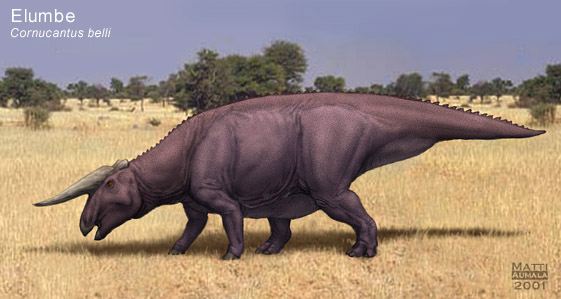

Named for the African god Walumbe, the elumbe (Cornucantus belli) is a recent immigrant from Europe, the largest and last survivor of the cornucantidae, big basal formosicorn behemoths (closely allied to the catoblepids) that flourished in Plio-Pleistocene western Eurasia, but succumbed to extinction during the last ice age. At up to 8.5 m in length and weighing in at a little under 7 tonnes, it is by far the most massive of the ungulapeds.Notable features of the elumbe include the loss of digit 5, the enormous "unicorn-horn" whose base is formed from the fusion of the frontals and posterior nasals, equal-sized pedal digits (the middle toe is enlarged in extant Eurasian formosicorns) with relatively small unguals and reduced squamosal horns. It feeds primarily on grasses but will also take some leaves and tubers. It also drinks a lot, staying close to reliable water sources.
The elumbe is a solitary, territorial animal, coming together only to mate. The single calf is raised by the mother alone. They are nearsighted and bad-tempered, charging at anything that moves. It was an elumbe that was responsible for crippling the large male molok which was later
killed by thebirds - suffice to say that even had the molok not encountered the cityfinch colony, it would not have been making any more molokettes.